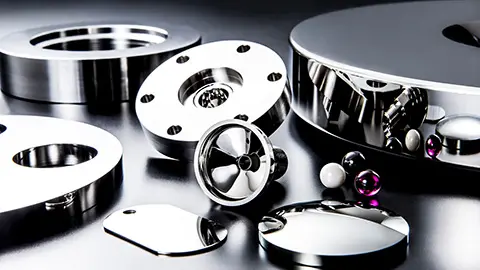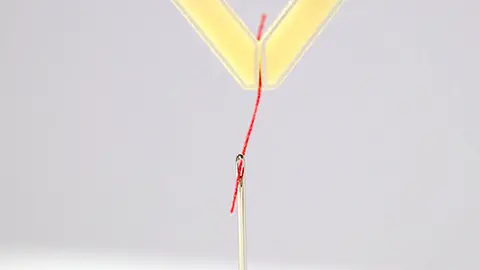VOL.194 JULY 2024
JAPANESE SMALL AND MEDIUM ENTERPRISES LEADING THE WORLD
A Drone That Takes Clear Images in Tight Indoor Spaces
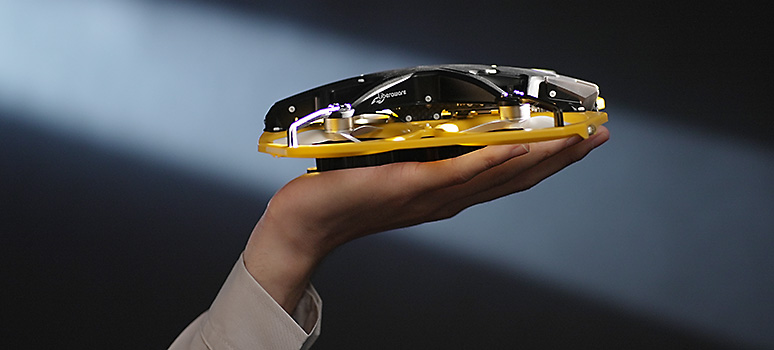
A palm-sized indoor inspection drone
Photo: Liberaware
Liberaware Co., Ltd., based in Chiba City, Japan, has developed and is marketing a palm-sized drone that uses a built-in camera to capture images of tight indoor spaces. The drone’s features include its small size, stable flight in indoor spaces, and the use of a high-sensitivity camera to capture clear images.
Liberaware Co., Ltd. has developed the IBIS2 ultra-small inspection drone for narrow and limited spaces. It’s palm-sized at about 20 cm2 and lightweight at a mere 243 g.
MUKAIYAMA Takuya, public relations representative in the company’s Smart Industrial Safety Dept., says proudly, “It’s one of the world’s smallest drones for industrial use. It weighs about the same as a peach, and it can enter a 30-cm access hole and can even inspect the interior of a 50-cm diameter duct.”
This tiny, lightweight drone can fly into tight spaces and capture clear images with its highly sensitive built-in camera. In environments that radio waves can’t penetrate, you can install a special antenna inside the space and have a person outside operate the drone, which can fly for up to 11 minutes on battery power.
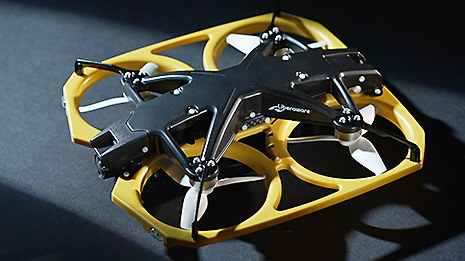
Photo: Liberaware
The drone takes over inspection duties for narrow, dark, and dangerous facilities, such as ceiling spaces and duct interiors, and can be operated remotely from a safe location. East Japan Railway Company is currently using IBIS2 to inspect ceiling spaces in its station facilities.
“Even where it’s possible for a worker to enter a ceiling space through an access door, there is the risk of breaking through and destroying the ceiling. On one hand, looking over a ceiling space through an access door and checking the surroundings will limit the scope of the inspection. However, a drone enables you to run a wide range of inspections with less effort,” MUKAIYAMA explains.
This drone is advantageous for indoor inspections due to its small size and light weight, as well as its flight stability.
“Small drones usually stop moving when they hit the side of a space during flight, but you don’t have to worry about this with our drones, because they are equipped with attitude control technology that allows them keep flying horizontally,” says MUKAIYAMA. Thus, another feature of this drone is its side crash innovation already in place—it can sustain flight even after impact.
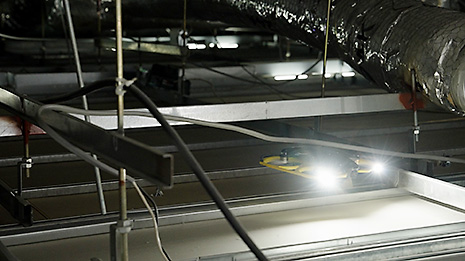
Photo: Liberaware
Another strength is the camera built into the body of the IBIS2. Since the photo-taking environment is often dark—as with a ceiling space—the camera must be sensitive enough to capture clear images even in such an environment. To meet this need, the company developed its own high-sensitivity, wide-angle camera that incorporates technology from the Sony Group, a world leader in image sensor* technology for security cameras. This camera is built into the front of the drone body and captures images in the direction of movement.

Photo: Liberaware
The use of drones for indoor inspections has been expanding in recent years. For example, MUKAIYAMA stresses that drones can be used to search for missing persons in a disaster, or to survey the damage situation inside a damaged house. “Our drones are being used not only to inspect familiar infrastructure facilities, but also to survey damage inside collapsed buildings hit by the January 2024 Noto Peninsula earthquake, and in a growing variety of other places that humans can’t safely enter. We hope you’ll remember our drones whenever you may have a difficulty, perhaps related to an inspection inside a facility.”
* The image sensor is the “eye” of a digital camera. Its role is to convert light coming through the camera lens into electrical signals and then transmit the data. Security camera image sensors use cutting edge imaging technology to capture images in dark places and other harsh environments.
By MOTEGI Shunsuke
Photo: Liberaware
